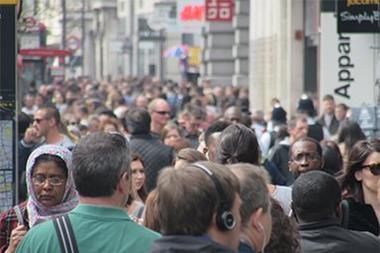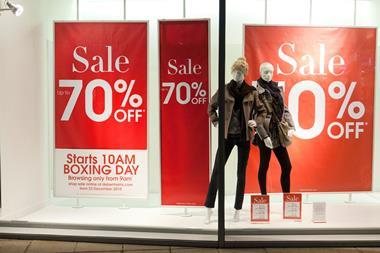Shop prices dropped in December as festive price cuts to non-food items offset rising inflation in grocery prices.
Shop prices fell 0.6% year-on-year in the period covering December 4 to December 8 last month, gaining pace from the 0.1% fall in prices in November a marking the deepest deflation since last March.
According to the BRC-Nielsen shop price index, non-food prices fell at their steepest rates since last January, dropping 2.1% year-on-year compared to 1.1% in November.
By contrast, the rate of food inflation increased during the period, up 1.8% in December compared with 1.5% in November.
Fresh food prices were the primary driver of this inflation, with prices up 2% year-on-year compared with 1.3% in November.
Ambient food inflation continued at a similar pace month-on-month in December, up 1.7% compared to 1.8% in November.
‘Much-needed breathing room’
BRC chief executive Helen Dickinson said: “After several months of shop prices teetering on the edge of inflation, December saw them retreat deeper into deflationary territory. Prices in December fell at the fastest rate since March this year when only last month we saw the shallowest rate of deflation for four years.
“These discounts allowed consumers some much-needed breathing room during the festive period at a time when the cost of their food shop is on the rise.
“Food inflation picked-up pace this month, fuelled by climbing global food prices earlier in the year. While retailers will continue to do their best to absorb cost increases for their customers, the challenges to the industry remain stark with more inflationary pressures in the pipeline.”
Nielsen head of retailer and business insight Mike Watkins added: “With consumer confidence wavering and unpredictable levels of demand, many non-food retailers have been keeping prices low to stimulate spending, which will undoubtedly have come at a cost to margins.
“Whilst food prices have edged up a little due to supply chain increases in fresh and seasonal foods, pricing across supermarkets will remain competitive as we start 2018 with consumers still coping with higher household bills.”


























No comments yet